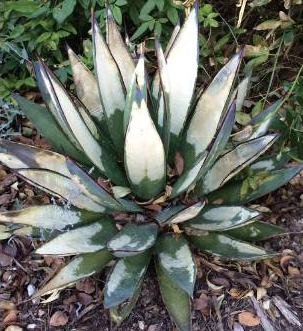
We are in the recovery phase of one of the worse Artic Polar Vortex outbreaks in history. Fourteen states with major damages and millions of people affected from the record-breaking single digit to minus degree temperatures, below freezing temps, severe wind chill factors, then snow and ice conditions. Then the
4 to 5 days of duration exacerbated the onset conditions. I can tell you as weather buff and storm spotter, I have never, ever seen these conditions in New Mexico to West Texas and the long-term damaging results.

As a horticulturist and landscaper, this Polar Vortex has created a lot of damages and even death to numerous winter hardy plants for our region. The Goliath storm a few years back was NOT as bone-chilling cold. NO deep freezing minus temps or the biting wind chills. The hefty and deep snowfalls received were beneficial and acted as an insulation on plants. Damages amounted to snow weighted tree branches breaking and roofing damages due to weight of snow accumulated.
The Polar Vortex created severe wind chills and deep-freezing temperatures. These conditions damage plant cells by bursting the water contained within the plant leaves, young stems, and woody parts of the plants and eventually reaching root crowns as freezing deepens within the soil and roots then become affected.

Currently, we have warmed up. You will see all kinds of freeze damage starkly now. Do not get in a hurry to clean and remove plants. Learn to live with the brown for a while, as some plants will recover, and others froze to death. I have first aid gardening to help you out in the home gardens and landscapes. This is a time to be patient, and NOT a time to start throwing out unsightly foliage or digging up plants you deem to be dead.
Examine a plant’s condition
Trees, shrubs, woody vines need to be assessed in a few ways. Stems and twigs should still be pliable or springy. Damaged leaves should shed naturally if the stem is undamaged—a twig/stem with leaves still attached is a bad sign. As a gardener you can do a simple scratch or knife cut test that can reveal the depth of damage. Lightly scratch or make small cut on lower branches on shrubs/trees as this will reveal if the plant is still alive. If you see green, great. If you see brown/ black tissue…it’s a goner!
Practice patience now
Do not prune everything that you think is frost/freeze damaged. You need to wait. Mother Nature will begin to act, as temperatures rebound, and you water your plants. Yes, I said water your frozen plants. As temps climb along with soil temperature the plants will begin to show new green bud and shoots. Then you will see how far the plant has died. If tip ends of branches and stems have not rebounded, you prune or cut out to the healthy growth. The reason I say to wait before cutting away ALL foliage, we ARE NOT finished with winter weather in Southeast New Mexico or in the West Texas counties to our Stateline. Dead upper-story canopies, large or small, can help insulate the plant if more freezing weather comes our way. So, live with a little brown a little longer. Pruning now can stimulate the plants and a refreeze can certainly kill the remaining plant. Wait until frost dangers are over.
Mushy—wet rotting vegetation
Here is the exception! Any plant material that has mushy, wet to rotting leaves and stems needs to be removed now—but only the nasty squishy parts and NOT the whole plant. Agaves (Century Plant), many types of prickly pear cacti, German bearded iris leaves, Society garlic, columbines are a few examples and more. These plants will regrow from underground roots, bulbs and plantlets under Agaves.
Cool season vegetables such as Cabbage, Broccoli, Kale, and others probably froze out from the duration of low, single digit temps over several days. They will have yellowed out and have a foul-smelling sulfur aroma as they decay—remove them and prepare for warm season veggies. Their season is OVER now.
Leave Your trees alone!
I have driven through Hobbs, Lovington, Seminole, Lubbock and Midland in recent days assessing the Polar Vortex storm damages in neighboring communities. I can say it is staggering at the amount of damage done to normally winter-hardy vegetation that has been growing for 40 plus years in landscapes.
Trees are split in half. There is lots of broken upper-canopy branches due ice and snow weight and brittle cold wind chills that will snap stems and smaller branches. For safety reasons, do take out completely detached branches to prevent falling on vehicles and injuring by-passers or you. These will become dislodged weights when high spring winds blow. Waiting will again let you see where green buds and newly emerging shoots and live wood is on the tree. Line up a certified professional arborist to come prune trees at this time. They can prune for the health of the tree and remove many weak branches which helps to strengthen the whole upper canopy.
Texas Live and Southern Live Oaks have taken a beating on the extreme freezing temps and negative wind chills factors. These oaks are showing an overabundance of leaf desiccation. Leaves dried out and falling from trees like snow. Do not panic just yet, as temps climb you should start to see new green shoots appearing. I have seen Live Oaks this past week with 90 to 100 per cent of leaf drop.
On young trees with green bark or light woody bark, you may notice a splitting of the bark from the tree’s trunk. This is another major frost damage issue on young trees. Sometimes this must be removed manually by cutting away the exploded damage from tree’s trunk. This will not reattach and will die leaving an ugly scar on the tree. Give it time and the tree will heal naturally.
Prescribed medical treatment
I stated earlier to water trees, shrubs and landscaped areas. Damages could possibly have been minimized on plants if the ground moisture were adequate and plants where fully hydrated internally. Drought stresses, lack of water afforded to the plants, sets up this catastrophic event. Provide water now and begin with light doses of fertilizers to help stimulate plant growth after frost dangers are over. Our last frost date for Central Lea County is April 15th as a historical average. Time is with us as spring approaches, be patient and prune and cut away as see your landscaped plantings sprouting new growth to you.
If you need a consult on these damages, please call or email me. I will schedule a visit to give you some gardening advice and directions. Your landscapes and plants are resilient, spring is coming, and new life will appear. Gardeners… BE PATIENT!
Dr. Dirt, also known as David Hooten, is president of the Western Heritage Horticultural Society and owner of Son Grown LLC. He has more than 50 years of experience in the local horticultural industry. He be reached at 575-318-8540 or dhooten@valornet.com.












